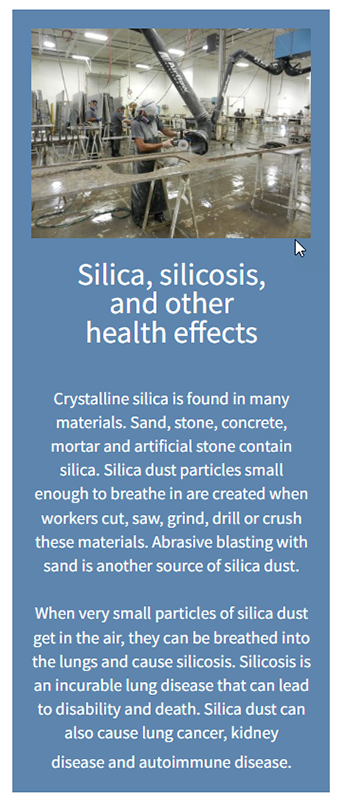
Silicosis Health Advisory for Engineered Stone Fabrication Workers in Los Angeles
Fabrication Workers are at high risk of getting Silicosis- a deadly disease contracted from working in stone countertop fabrication. Silicosis is a serious lung condition caused by inhaling tiny crystalline particles of silicon dioxide, commonly known as silica. Silicosis results from prolonged exposure to silica dust. You're at risk if you work in industries like mining, construction, or stone cutting. When you breathe in silica particles, they settle deep within your respiratory passages and cause damage to your lungs.

Symptoms of silicosis include:
Over time, this scarring stiffens your lung tissue, making it difficult to breathe and severely damaging your immune and respiratory systems. While silicosis has no cure, management and treatment can help alleviate symptoms.

Symptoms of silicosis include:
- Persistent coughing
- Inflammation (swelling)
- Fibrosis (scarring)
Who is at Risk?
Silicosis is closely tied to occupational exposure. You may be at higher risk if your job involves:
Prevention is crucial. Use protective equipment, minimize exposure, and seek medical attention if you suspect exposure or experience symptoms. Along with various online resources, you can also request a Workplace Health Hazard Evaluation or a CAL/OSHA Consultation to confirm if you are at risk of silicosis in your current workplace.
- Construction, demolition, or stone work
- Sandblasting
- Pottery, ceramics, or glassmaking
- Mining or quarrying
- Foundry work
Resources and Information
The LA County Public Health Department offers detailed information and resources on silicosis, risk factors, symptoms and prevention.
Additional information can be found at:
Additional information can be found at:



